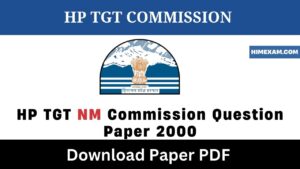Computer Questions Answers for Competitive Exams Set-20
||Computer Questions and Answers for Competitive Exams Set-20||Computer Questions Answers for JOA IT,Computer operator & other exams||important computer related question answer||
1. Information Technology is the combination of
(A) computing, business and communications
(B) business, internet and software
(C) microelectronics, computing and communications
(D) data base management, communications and internet
Explanation:-The term “Information Technology” (IT) has been variously defined. It is defined as the coming together of computing and telecommunications for the purpose of handling information; the application of technologies to information handling; including generation, storage, processing, retrieval and dissemination. It is a broad-based term comprising the gathering (acquisition), organization (packaging), storage and retrieval (dissemination) of information. Internet is an essential component of it.
2. An electronic device that produces sounds from instructions in a mini file is a
(A) synthesizer
(B) scanner
(C) speaker
(D) sampler
Explanation:-A sound synthesizer is an electronic instrument capable of producing a wide range of sounds. Synthesizers may either imitate other instruments (“imitative synthesis”) or generate new timbres. They can be played (controlled) via a variety of different input devices (including keyboards, music sequencers and instrument controllers). Synthesizers generate electric signals (waveforms), and can finally be converted to sound through the loudspeakers or headphones.
3. A technique for producing animation in which one image changes into another is called
(A) Embedding
(B) Linking
(C) Morphing
(D) Scanning
Explanation:-Morphing is a special effect in motion pictures and animations that changes (or morphs) one image into another through a seamless transition. Most often it is used to depict one person turning into another through technological means or as part of a fantasy or surreal sequence.
4. The device that converts digital signals to analog signals at the start of long distance transmissions is
(A) peripheral
(B) modem
(C) telephone
(D) antenna
Explanation:-A modem takes the digital signal from the computer and converts it to “analog”. It does this by both creating an analog sine wave and then “MODulating” it. Since the result still represents digital data, it could also be called a digital signal instead of analog.
5. Information in a combination of graphics, text, sound, video and animation is called
(A) Multiprogram
(B) Multifacet
(C) Multimedia
(D) Multiprocess
Explanation:-Multimedia is media and content that uses a combination of different content forms. This contrasts with media that use only rudimentary computer displays such as text-only or traditional forms of printed or hand-produced material. Multimedia includes a combination of text, audio, still images, animation, video, or interactivity content forms
6. Optic fibres are used in place of wire cables because
(A) they generate strong magnetic fields
(B) they do not generate magnetic fields
(C) they do not require boosting
(D) they are more economical
Explanation:-Optical fibers are used instead of metal wires because signals travel along them with less loss and are also immune to electromagnetic interference. Besides, there are no radiated magnetic fields around optical fibers; the electromagnetic fields are confined within the fiber. Since fiber optics do not radiate electromagnetic energy, emissions cannot be intercepted.
7. The name “modem” is derived from
(A) modern demarkator
(B) modulator demand
(C) modern demodulator
(D) modulator demodulator
Explanation:-A modem (modulator-demodulator) is a device that modulates an analog carrier signal to encode digital information, and also demodulates such a carrier signal to decode the transmitted information. The goal is to produce a signal that can be transmitted easily and decoded to reproduce the original digital data.
8. How much data does a standard floppy disk hold?
(A) 512KB
(B) 1.44MB
(C) 20 MB
(D) 1GB
Explanation:-The floppy disk were produced with a capacity of 720 KB, followed by what became the most common format, 1.44 MB. All disks had a rectangular hole which, if obstructed, write-enabled the disk. 1.44 MB disks had another hole which identified them as being of that capacity.
9. Consider the following statements:
A. Adam Osborne produced the first portable computer.
B. Ian Wilmut created the cloned sheep. Which of the statements given above is (are) correct ?
(1) A only
(2) B only
(3) Both A and B
(4) Neither (A) nor (B)
Explanation:-Adam Osborne was an American entrepreneur who was best known for creating the first commercially available portable computer, the Osborne 1, released in April 1981. Ian Wilmut is best known as the leader of the research group that in 1996 first cloned a mammal from an adult somatic cell, a Finnish Dorset lamb named Dolly
10. In a computer, what does RAM stand for ?
(A) Ready to Access Memory
(B) Read At-a-time Memory
(C) Random Access Memory
(D) Readily Available Memory
Explanation:-Random-access memory (RAM) is a form of computer data storage. A random-access device allows stored data to be accessed in very nearly the same amount of time for any storage location, so data can be accessed quickly in any random order. In contrast, other data storage media read and write data only in a predetermined order.
CLICK HERE FOR JOA IT TEST SERIES 2022
Join Our Telegram Group :- Himexam


%20Exam%20%20Test%20Series%202022(Total%2010%20Test%20with%20Answer%20Key%20@start%2001%20August%202022)%20(2).png)







